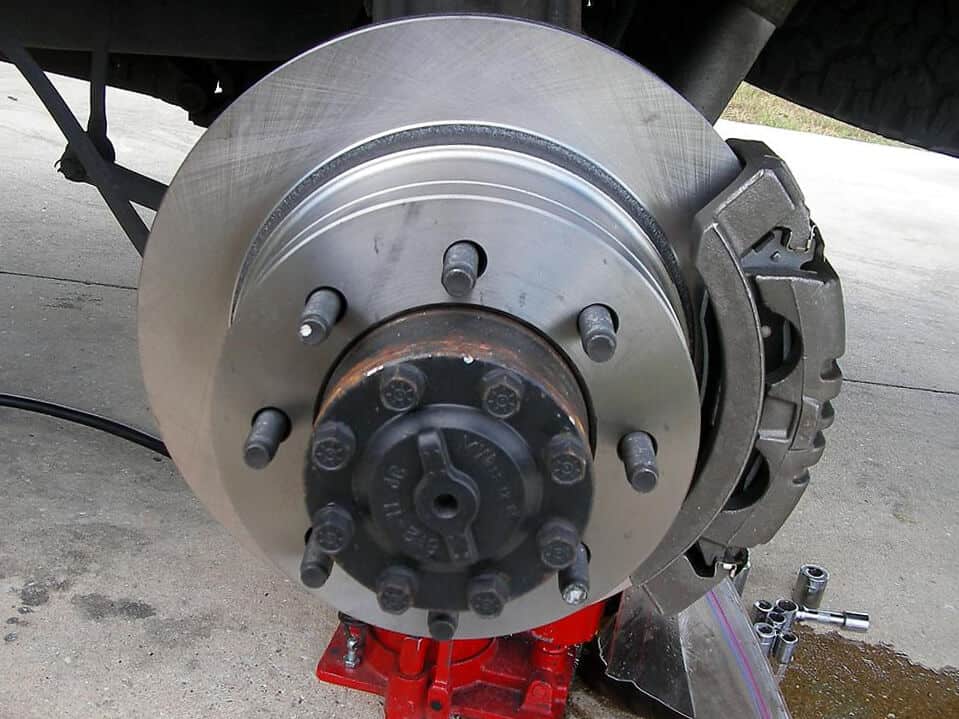Introduction: How Vehicle Weight Affects Brake System Health
Managing the health of a fleet’s brake systems is crucial for ensuring the safety and efficiency of its vehicles. One factor that plays a significant role in brake system health is the weight of the vehicle. In this article, we will explore the relationship between vehicle weight and brake system health, the importance of selecting the right brake components for different vehicle weights, and maintenance considerations for fleets with varying vehicle sizes.
The Relationship Between Vehicle Weight and Brake Performance
Vehicle weight has a direct impact on several aspects of brake performance, including:
Brake Pad and Rotor Wear
Heavier vehicles place more stress on brake pads and rotors, which can lead to increased wear and a shorter service life. This means that the brake components of heavier vehicles may need to be replaced more frequently than those of lighter vehicles.
Brake Fade and Heat Dissipation
The braking process generates heat, and heavier vehicles generate more heat due to the additional energy required to stop them. This can lead to brake fade, a temporary reduction in braking performance due to excessive heat buildup. Adequate heat dissipation is crucial for maintaining brake system health in heavier vehicles.
Stopping Distance
Heavier vehicles typically require longer stopping distances, which can put additional strain on the brake system and increase the likelihood of accidents.

The Role of Brake System Components in Handling Vehicle Weight
Various brake system components play a role in managing vehicle weight and maintaining optimal performance:
Brake Pads
The type and quality of brake pads used in a vehicle can have a significant impact on its ability to handle heavier loads. Higher-quality pads can provide better heat resistance and longer service life, which are essential for heavier vehicles.
Brake Rotors
Rotors are responsible for dissipating heat generated during braking. Heavier vehicles require rotors that can effectively manage higher heat loads to maintain optimal performance and reduce the risk of brake fade.
Brake Calipers
Calipers apply the force necessary to clamp brake pads onto rotors, and they must be able to handle the increased braking force required by heavier vehicles.
Brake Lines and Hoses
Brake lines and hoses are responsible for delivering brake fluid to the calipers, and they must be able to handle the increased pressure associated with braking in heavier vehicles.
Selecting the Right Brake Components for Different Fleet Vehicle Weights
To ensure optimal brake system performance, it is essential to choose the appropriate brake components for each vehicle in your fleet based on its weight:
Light-Duty Vehicles
For lighter fleet vehicles, such as passenger cars and small trucks, standard brake components may be sufficient. However, it is still essential to choose high-quality parts to ensure reliability and longevity.
Medium-Duty Vehicles
Medium-duty vehicles, such as larger vans and delivery trucks, typically require more robust brake components to handle the additional weight. Upgraded brake pads, rotors, and calipers may be necessary to maintain optimal performance and brake system health.
Heavy-Duty Vehicles
Heavy-duty vehicles, like tractor-trailers and buses, place even more stress on their brake systems. These vehicles require heavy-duty brake components specifically designed to handle the increased weight and heat generated during braking.
Brake System Maintenance Considerations for Different Vehicle Weights
Proper maintenance is crucial for maintaining brake system health, regardless of vehicle weight. However, heavier vehicles may require more frequent maintenance due to the increased stress placed on their brake components. Some maintenance considerations for different vehicle weights include:
Inspection Frequency
Heavier vehicles may require more frequent brake system inspections to identify and address potential issues before they become significant problems.
Component Replacement Intervals
The replacement intervals for brake pads, rotors, and other components may be shorter for heavier vehicles due to increased wear.
Brake Fluid Changes
Brake fluid changes may also need to be performed more frequently for heavier vehicles due to the increased heat and pressure generated during braking, which can cause the fluid to degrade more quickly.
The Importance of Proper Fleet Vehicle Loading and Weight Distribution
In addition to selecting the right brake components and maintaining them properly, it’s crucial to ensure that fleet vehicles are loaded correctly and that weight is distributed evenly. Overloading a vehicle or uneven weight distribution can exacerbate brake system wear and reduce overall vehicle performance. Proper loading practices can help maintain brake system health and reduce the risk of accidents related to poor vehicle handling.
How Driver Behavior Affects Brake System Health in Heavier Vehicles
Driver behavior plays a significant role in brake system health, particularly in heavier vehicles. Aggressive driving, such as speeding and hard braking, can cause excessive wear on brake components and lead to premature failure. Fleet drivers should be trained in fuel-efficient and brake-conserving driving practices to minimize brake system wear and maintain overall vehicle performance.

The Benefits of Proactive Brake Maintenance for Different Vehicle Weights
Proactive brake maintenance is essential for maintaining fleet safety and efficiency, regardless of vehicle weight. Some of the benefits of proactive brake maintenance include:
Improved Fleet Safety
Regular brake system maintenance helps ensure that all vehicles in the fleet are operating safely and reduces the risk of accidents due to brake failure.
Reduced Vehicle Downtime
Proactive maintenance can help identify potential brake system issues before they become significant problems, reducing the need for unscheduled repairs and vehicle downtime.
Lower Maintenance Costs
By addressing brake system issues early and preventing premature component failure, proactive maintenance can help reduce overall maintenance costs.
Enhanced Fuel Efficiency
A well-maintained brake system can contribute to improved fuel efficiency, as vehicles with optimal braking performance require less energy to stop.
Choosing the Right Fleet Maintenance Provider for Your Mixed-Use Fleet
Selecting a fleet maintenance provider experienced in managing mixed-use fleets can help ensure that your vehicles receive the appropriate brake system care. Look for providers with a proven track record of working with different vehicle types and weights and who understand the unique brake system needs of each vehicle in your fleet.
Conclusion: Balancing the Brake System Health of Your Mixed-Use Fleet Vehicles for Optimal Performance and Safety
Understanding the impact of fleet vehicle weight on brake system health is crucial for maintaining the safety and efficiency of your mixed-use fleet. By selecting the right brake components, implementing proper maintenance practices, and training fleet drivers in brake-conserving driving techniques, you can ensure that your fleet vehicles operate at peak performance and safety levels, regardless of their weight.
